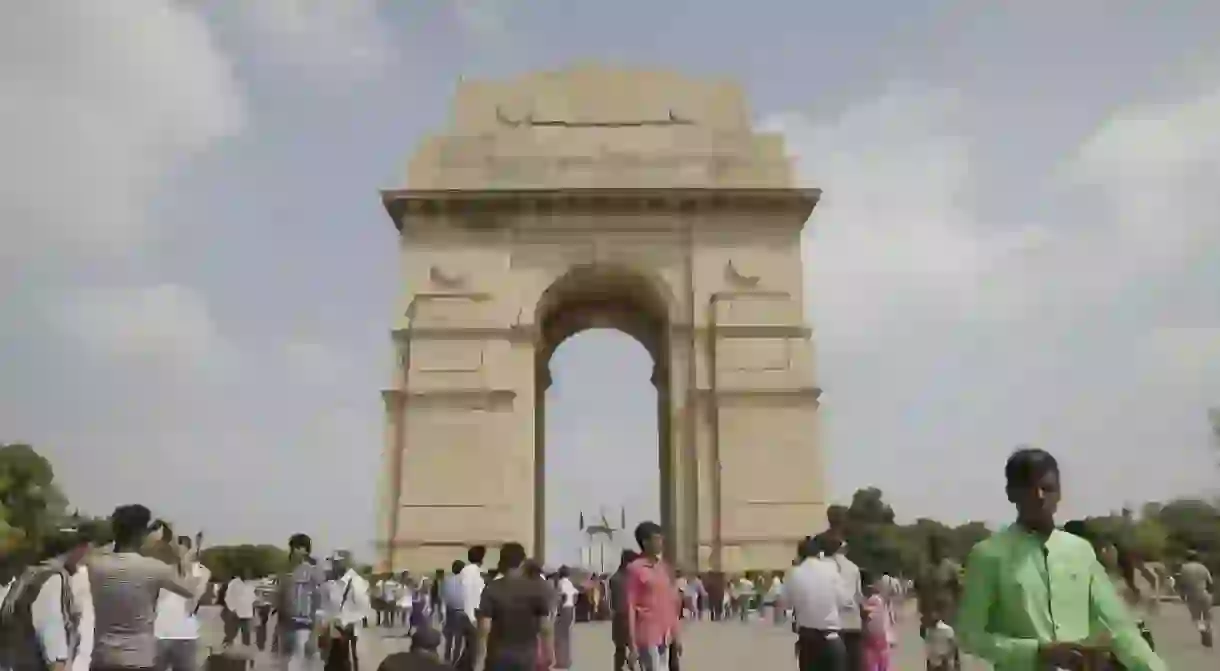A History of India Gate in 60 Seconds

The 138-feet war memorial pays tribute to over 80,000 Indian soldiers who sacrificed their lives during the First World War and the Third Anglo-Afghan War. A design that’s reminiscent of the Arc de Triomphe in Paris, India Gate is one of the most recognizable structures in India and the most treasured monument of Delhi.
The history
The Imperial War Graves Commission (now called Commonwealth War Graves Commission) was established in 1917 as an organization responsible for burying and commemorating First World War dead and missing soldiers. An All India War Memorial was commissioned as part of this project. The name was later changed to India Gate.
On February 10, 1921, the foundation stone for India Gate was laid down by Prince Arthur, Duke of Connaught in a military ceremony. The memorial was completed 10 years later and was inaugurated on February 12, 1931 by Lord Irwin, who was the Viceroy of India at the time.
The architecture
Sir Edward Lutyens, who played an all-important role in designing the city of New Delhi, was appointed the chief architect of India Gate. The entire complex is hexagonal in shape and covers about 306,000 meters squared of area.
The arch stands on a base of red stone from Bhartapur, Rajasthan and ascends in steps to form a vault at the top. The cornice has inscriptions of the British Imperial suns and on either side of the arch, there is an engraving of “INDIA,” along with the dates MCMXIV (1914) on the left and MCMXIX (1919) on the right. Below this the following words have been inscribed:
“TO THE DEAD OF THE INDIAN ARMIES WHO FELL AND ARE HONOURED IN FRANCE AND FLANDERS MESOPOTAMIA AND PERSIA EAST AFRICA GALLIPOLI AND ELSEWHERE IN THE NEAR AND THE FAR-EAST AND IN SACRED MEMORY ALSO OF THOSE WHOSE NAMES ARE HERE RECORDED AND WHO FELL IN INDIA OR THE NORTH-WEST FRONTIER AND DURING THE THIRD AFGHAN WAR”
An additional structure in the complex is the 73-feet-tall chattri, or canopy, visible through the arch of the India Gate. Constructed in 1936, the canopy sheltered the statue of King George V, who had passed away the same year. In 1968, the statue was relocated to Coronation Park in North Delhi and the site has been left empty ever since.
Beneath the India Gate arch is the Amar Jawan Jyoti, or Flame of the Immortal Soldier. It is a simple structure with a black marble base, over which is a reversed L1A1 self-loading rifle crowned by a war helmet. Four eternal flames surround this installation. It was erected in memory of the Indian soldiers who fought and died in the Bangladesh War of Independence in 1971.













